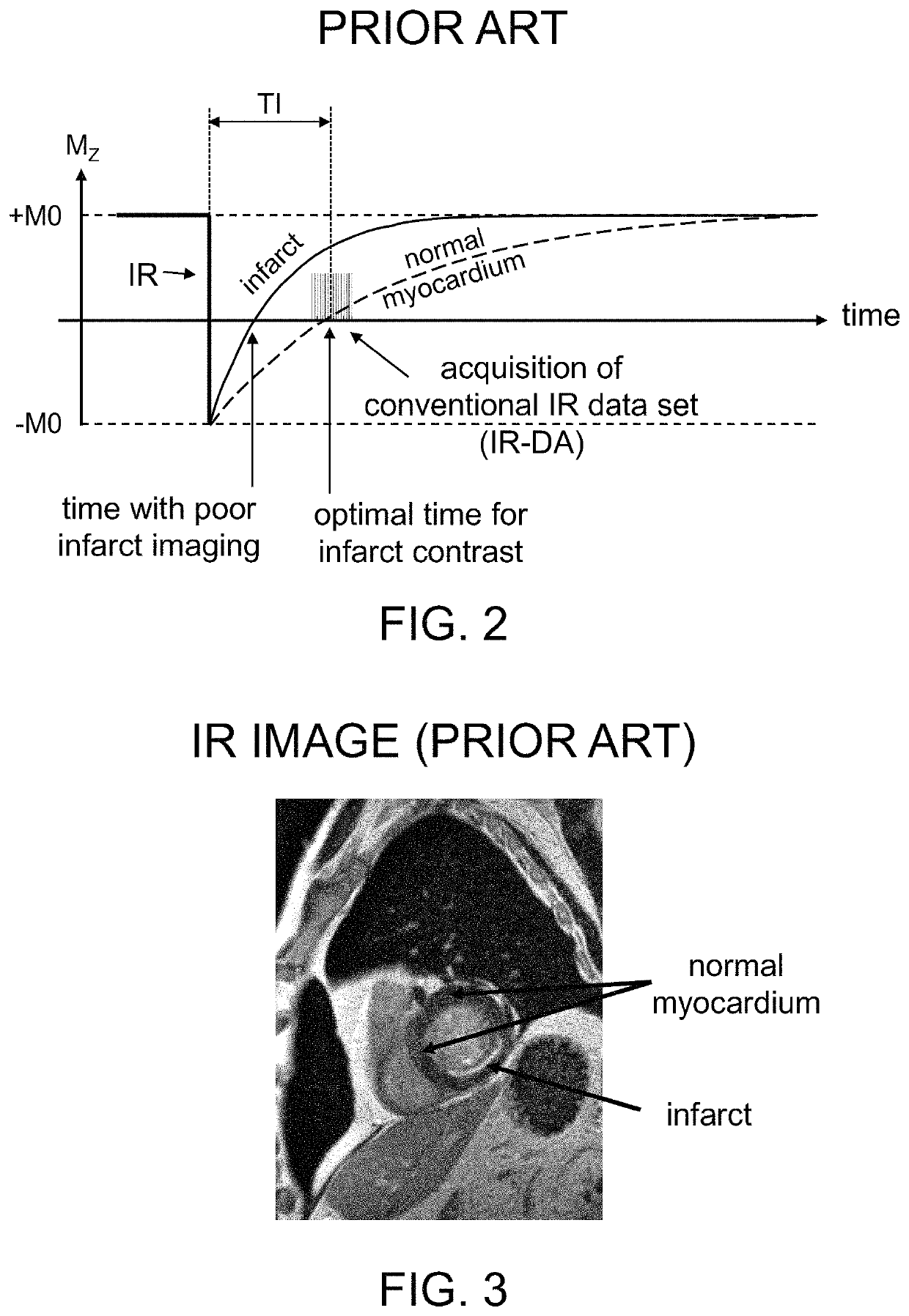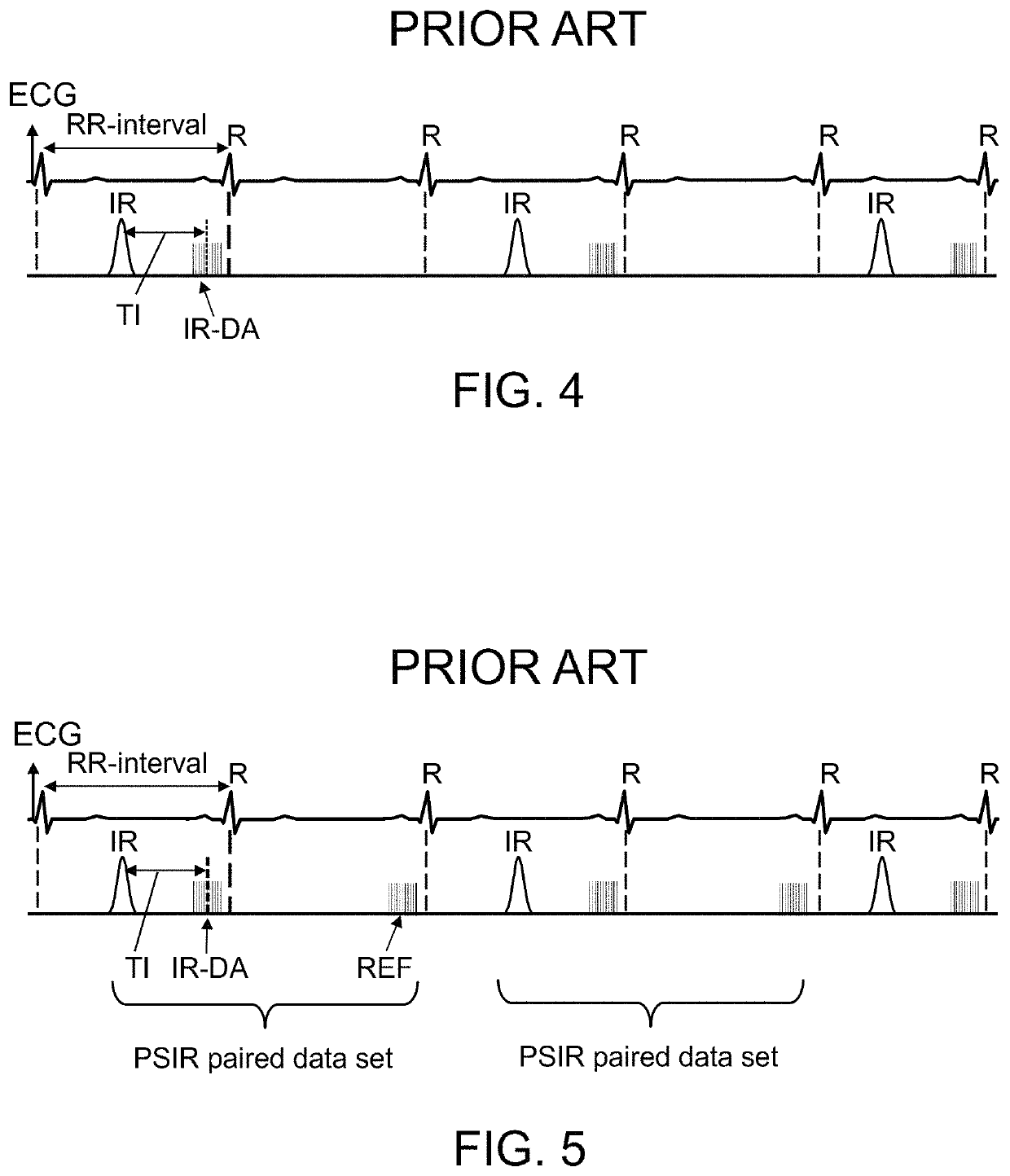Systems and methods for phase-sensitive inversion recovery MR imaging with reduced sensitivity to cardiac motion
a phase-sensitive inversion recovery and mr imaging technology, applied in the field of systems and methods for phase-sensitive inversion recovery mr imaging with reduced sensitivity to cardiac motion, can solve the problems of image contrast, uninterpretable or misinterpreted clinical images, image data corruption, etc., and achieve the effect of reducing spatial misregistration and reducing scan times
- Summary
- Abstract
- Description
- Claims
- Application Information
AI Technical Summary
Benefits of technology
Problems solved by technology
Method used
Image
Examples
Embodiment Construction
[0033]Exemplary embodiments of the present disclosure can provide a system and method for magnetic resonance (MR) imaging that can overcome limitations associated with standard phase-sensitive inversion recovery (PSIR) imaging techniques and similar MR imaging techniques by collecting paired reference and inversion recovery datasets within a shortened time frame. This can reduce spatial misregistration between the paired datasets for both segmented and single shot dataset acquisitions, and for acquisitions using or not using respiratory navigators. Further, scan times may be reduced for acquisitions using respiratory navigators.
[0034]In certain embodiments of the disclosure, a method for triggered cardiac PSIR imaging is provided in which the paired reference and inversion recovery (IR) datasets are acquired within the duration of a single cardiac cycle (e.g. the time between consecutive R-waves or heartbeats). In one embodiment, these two paired datasets are acquired within the sam...
PUM
 Login to View More
Login to View More Abstract
Description
Claims
Application Information
 Login to View More
Login to View More - R&D
- Intellectual Property
- Life Sciences
- Materials
- Tech Scout
- Unparalleled Data Quality
- Higher Quality Content
- 60% Fewer Hallucinations
Browse by: Latest US Patents, China's latest patents, Technical Efficacy Thesaurus, Application Domain, Technology Topic, Popular Technical Reports.
© 2025 PatSnap. All rights reserved.Legal|Privacy policy|Modern Slavery Act Transparency Statement|Sitemap|About US| Contact US: help@patsnap.com



